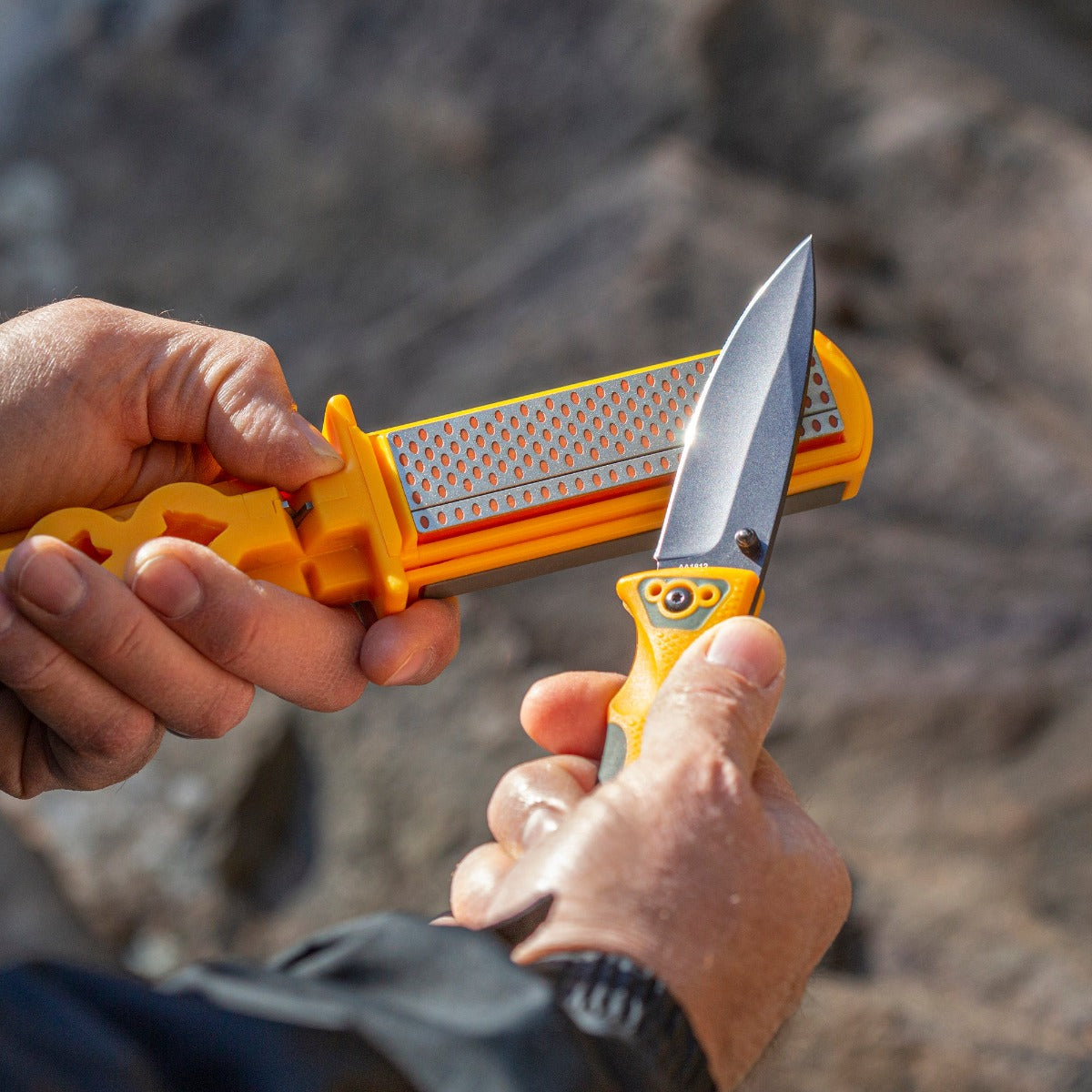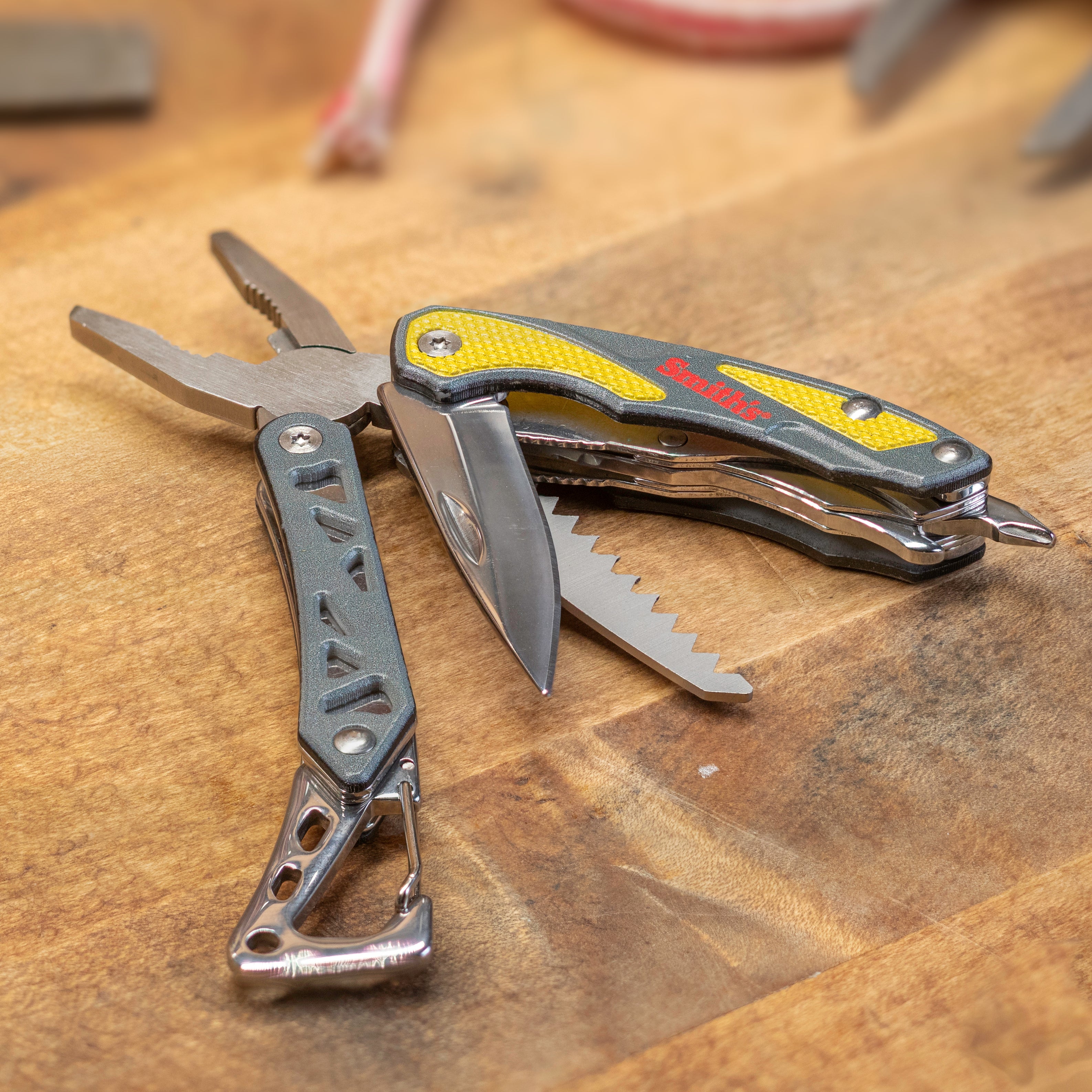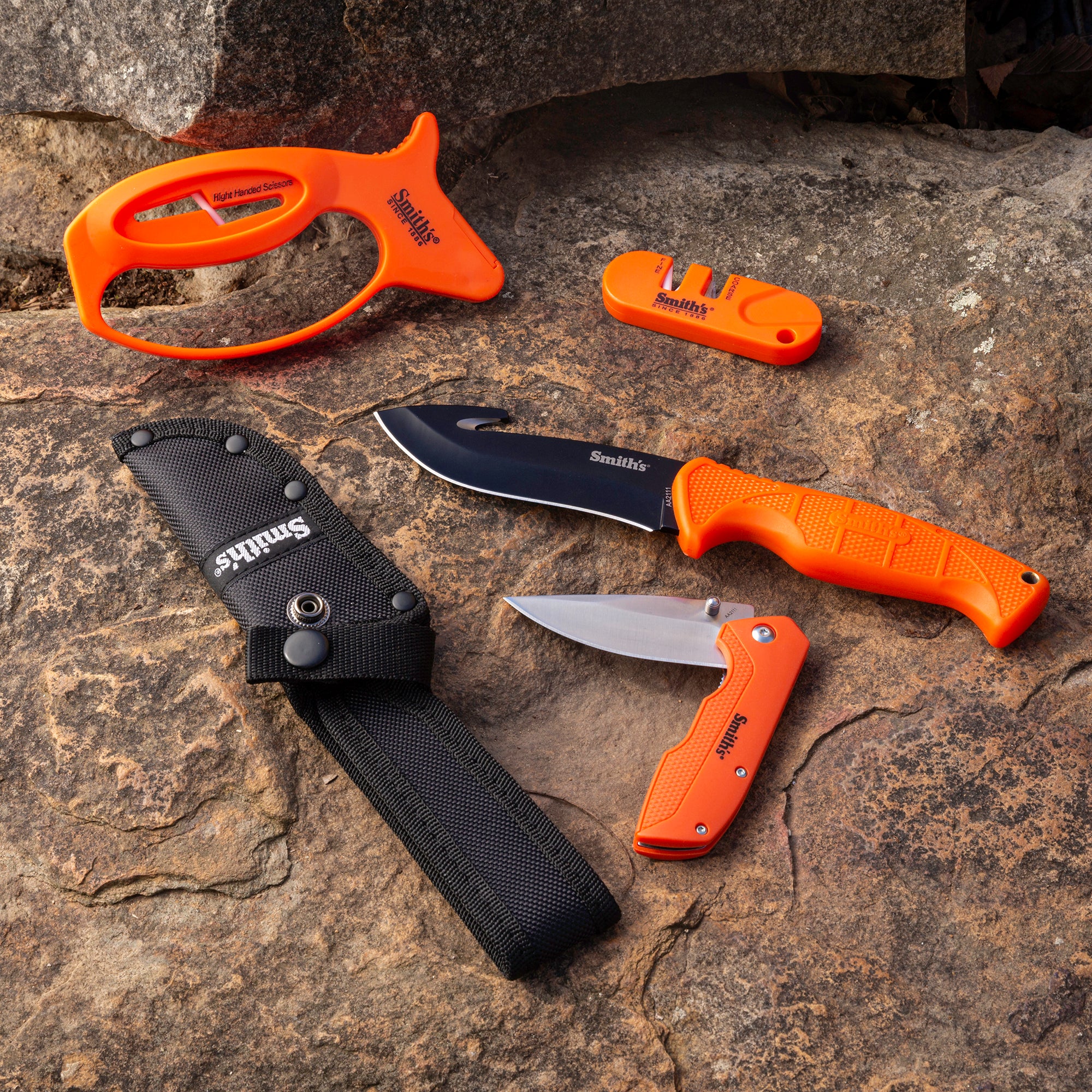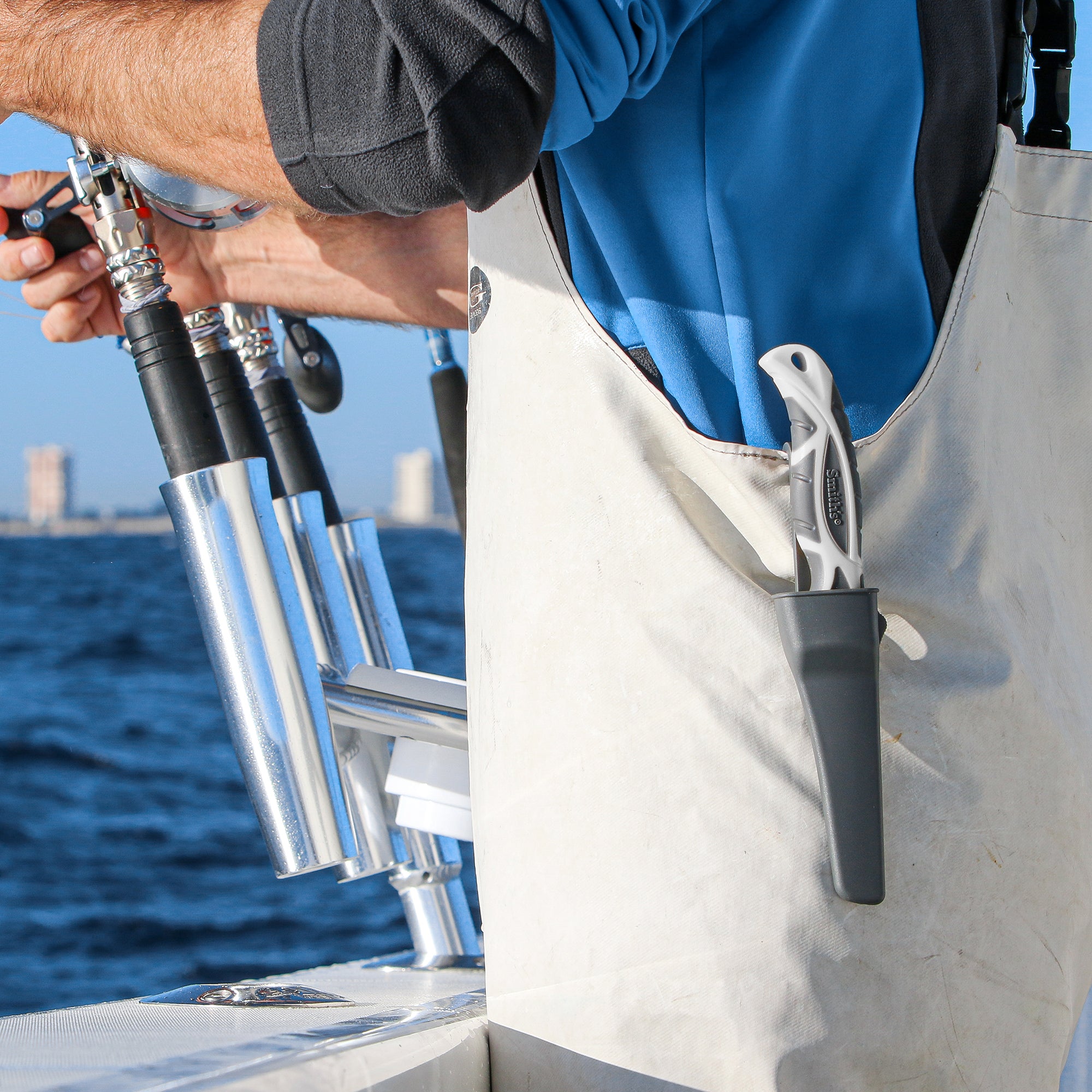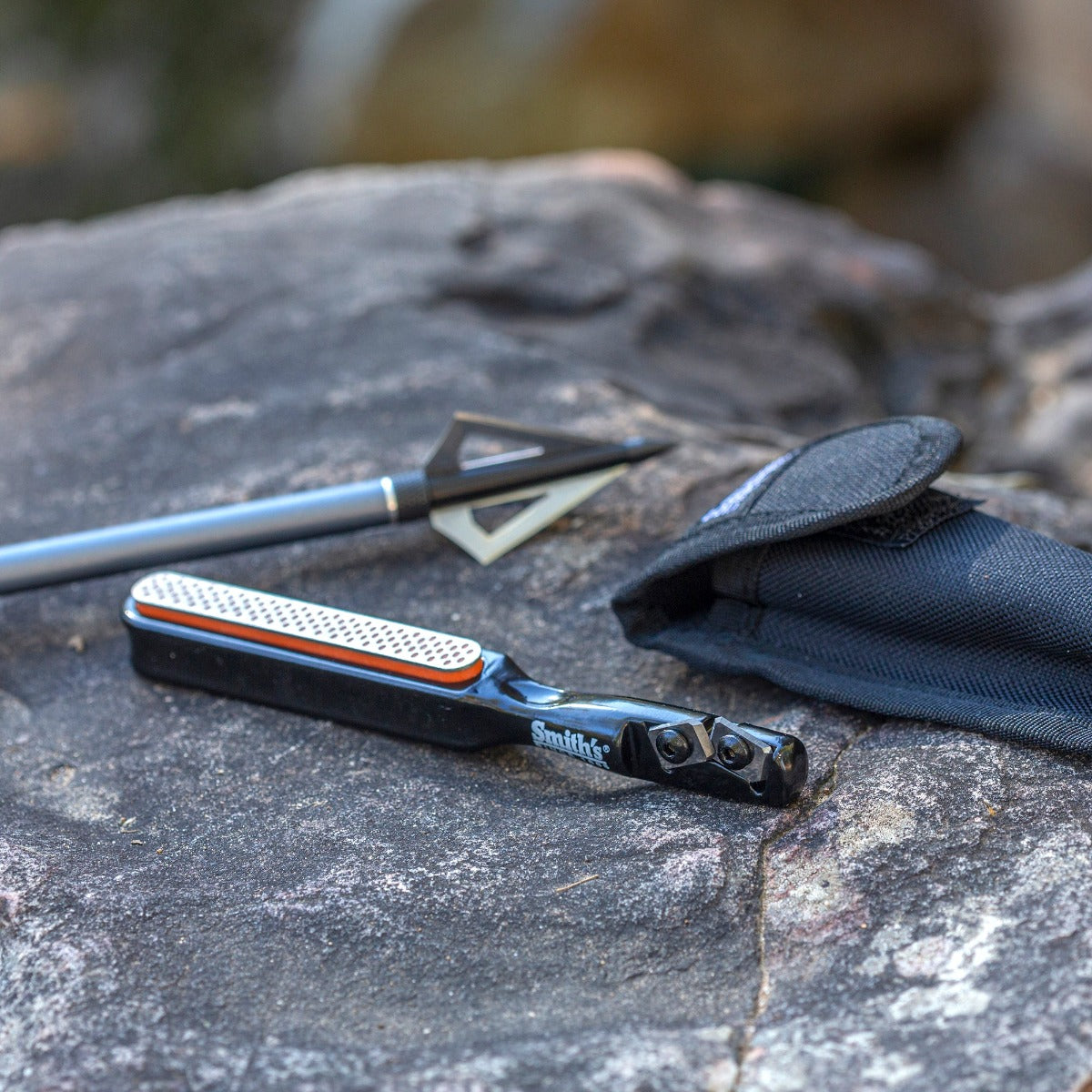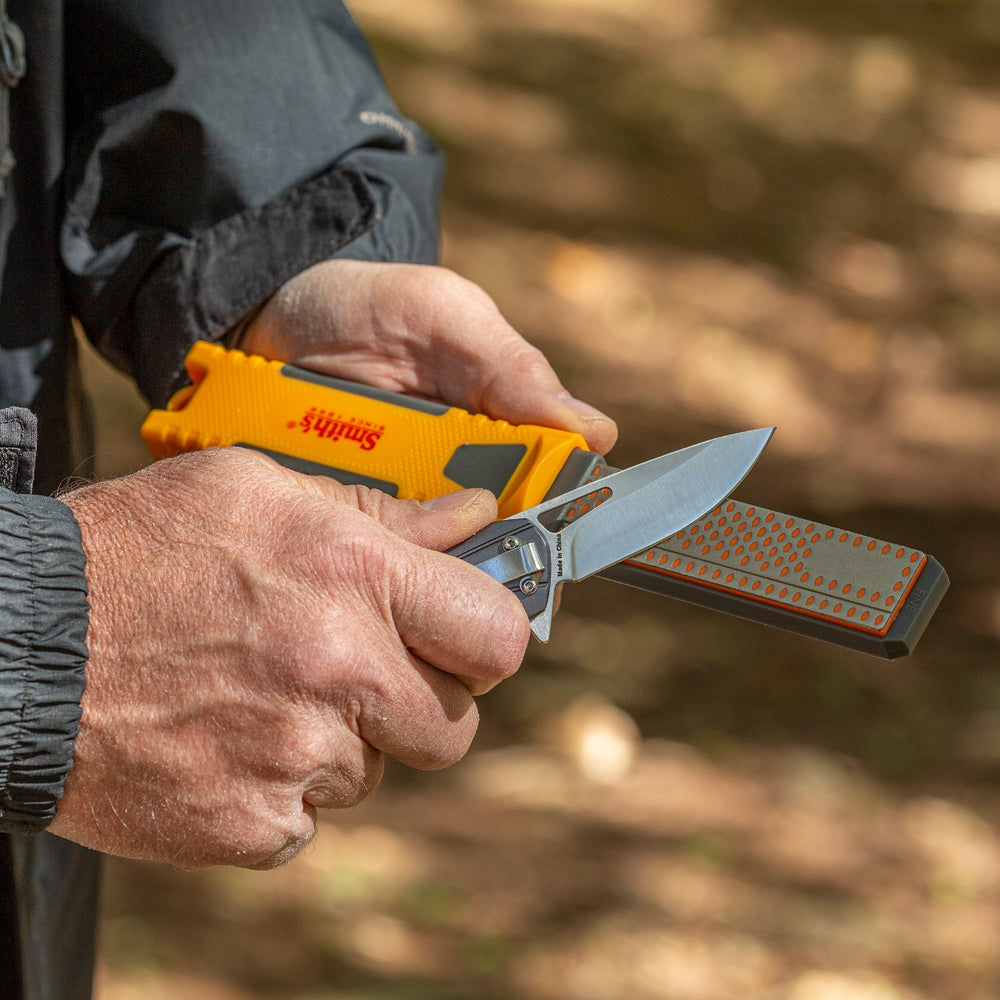Perfect Blackened Fish Begins with Smith’s
High-Precision Knives Yield Delectable Results
Harvesting fresh fish for the table remains a central part of the angling experience. The classic Friday fish fry – with walleye as the featured guest – remains a time-honored tradition in the upper Midwest. The striped bass is premium table fare along the Atlantic coast, often competing with steamed blue crabs for dinner table supremacy. From Oregon’s rocky coast to Alaska’s fjord’s, fresh-from-the-sea salmon is a staple that traces its roots to the earliest North American inhabitants. Transcending these regional options is a single unifying theme – a preparation technique – that applies to nearly every fish imaginable and yields superlative responses from those who sample it. Indeed, if you haven’t tried blackened fish, you’re missing out.

Blackening is a simple technique that leverages searing heat and authoritative spices to elicit an exquisite blend of flavor and texture from an incredible array of fresh and saltwater fish. Outstanding blackened fish begins with perfect portions, crafted with help from the Edge Experts at Smith’s Consumer Products. Wisconsin Northwoods fishing guide Dan Meyer considers his work at the cleaning station to be a two-step process when preparing fish for blackening. “First, if I have a pile of walleyes to buzz through, I reach for Smith’s Lawaia Electric Fillet Knife,”
reflects Meyer. “This knife has all the power I need to quickly process the day’s catch, and I appreciate the spare set of thinner flex blades that come with each knife for cleaning delicate panfish. Whenever I serve fish, I go out of my way to ensure that each portion is perfectly boneless – not just the big obvious bones, but also the smaller “pin” bones found along the lateral lines of larger fish. Smith’s EdgeSport 6-inch Boning/Fillet Knife is the right tool for this job. It has a razor-sharp, curved blade that tapers to a fine point, which helps me remove those smaller, thin bones with ease while retaining as much of the body of the fillet as possible. If there is a bloodline along the outside of the fillet or any skin that I didn’t remove with the electric knife, the EdgeSport knife makes quick work of those too. You’ll want to remove those areas as they can be the source of a strong, “fishy” taste that may dampen your enjoyment of a great blackened fish meal.”

“I can blacken just about any fish you might imagine,” asserts Meyer. “I lean toward the fish we have in abundance in northern Wisconsin, like walleye, pike and panfish – but we’ve enjoyed some great meals of blacked redfish from Louisiana, halibut and salmon from Alaska, and steelhead from the Great Lakes. I will blacken the entire fillet as one piece with smaller fish, like a nice eater-sized walleye or crappie. If I’m working with a larger fish, like a full-sized salmon fillet, I will prepare individual portions between four and six inches long. The thickness of the portion determines how long I will blacken each side. For example, for relatively thin crappies, I will blacken that fish for 90 seconds on each side, while walleye fillets might need three minutes before I flip them. A thick fillet from an Alaskan salmon or halibut likely reaches closer to four minutes per side; remember that with a salmon or trout, you can also watch the fillet’s color change to help you gauge if it is fully cooked.”

Meyer dredges the fillets with olive or grapeseed oil, and then liberally applies his favorite blackening spices – a custom blend from KFRED Kajun Seasoning but any robust, flavorful blackening mixture is also a good choice. Meyer then cranks up the heat, using the base of an LP-fueled turkey cooker to provide the fire needed to transform fresh fillets into a delectable blackened meal. An open fire crackling along the rocky shores of your favorite lake is an equally suitable heat source. He pre-heats the pan – either a seasoned cast iron pan or a premium carbon steel farmhouse skillet – and then adds the fish, seasoned-side down. Once the fillets are in place and the aroma of blacked fish begins to fill the air, Meyer seasons the top sides of each fillet, flipping each after the appropriate amount of time has elapsed. “I monitor the time that I blacken each side carefully using the timer on my phone,” cautions Meyer. “While the blackened outsides of the fillets will be seared and have a firm texture, I want to avoid overcooking and drying out the interior. You can always put the fillets back on for another 30 or 60-seconds if they’re not done enough in the middle, but you can’t rescue fish that is dry as shoe leather throughout.”

Blackened fish not only provides a welcome change of pace from fried, grilled or baked fish, but is also particularly well-suited to be the regular main course of any fish lover's diet. Meyer recommends pairing blackened fish with a crisp fresh vegetable, such as seasoned fresh tomatoes from the garden or a hearty Ceasar salad, and a starch like twice-baked potatoes or homemade mac-and-cheese. Don’t be shy about going back for seconds – or thirds – because your first piece of perfectly blackened fish will never be enough.

About Smith’s Consumer Products:
Smith’s Consumer Products is an Arkansas-based company that traces its history to 1886. Smith’s produces the broadest line of knife and scissors sharpeners available, ranging from simple, fixed angle pull-through sharpeners for consumers that want quick and easy sharpening to sophisticated Precision Kits designed for the knife sharpening enthusiast. Our offering includes both manual and electrical sharpeners that incorporate many different abrasive materials, including diamond, carbide, ceramic, bonded synthetic abrasives, and, of course, natural Arkansas stones. The Edge Experts at Smith’s Consumer Products also design and manufacture a wide range of tools for outdoor enthusiasts as well as knives for everyday carry, tactical, shop, kitchen, hunting, and fishing needs.


